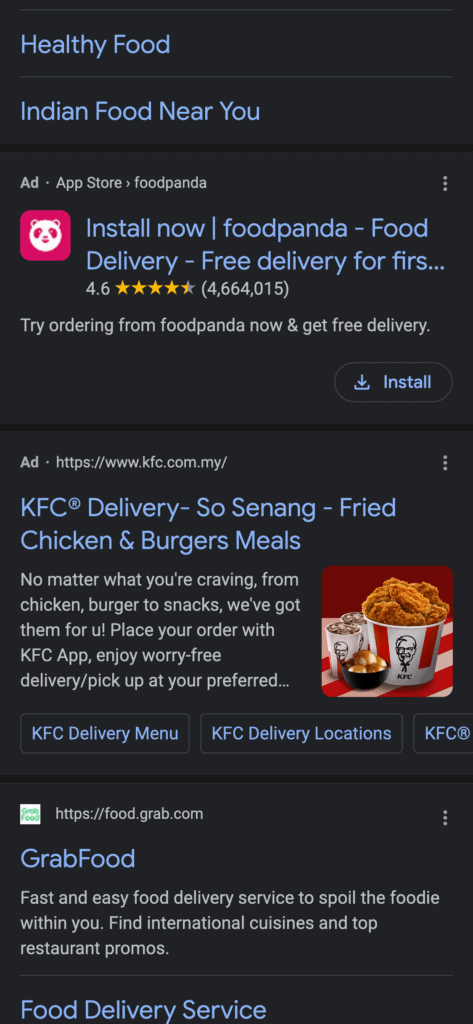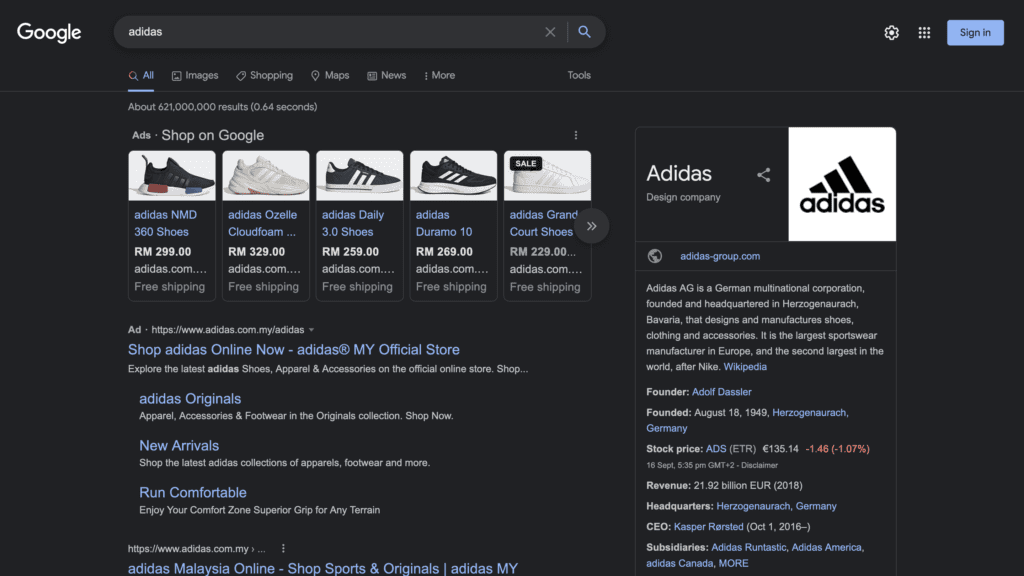Are you confused about how Google ads work? Do you feel like you're wasting your advertising dollars because you aren't sure how they work?
In this post, I'm going to explain everything you need to know about Google AdWords. From setting up campaigns, bidding, ad extensions, keywords, landing pages, and more.
I've also included tons of screenshots and videos to help make it as simple as possible.
If you're looking to get started with Google ads, then this post will save you hours of research and trial and error.
Table of Contents
Google Ads is a paid advertising program that falls under a marketing category called Pay Per Click (PPC). PPC is a form of online advertising where advertisers pay each time someone clicks on their link. These clicks are measured in cost per click (CPC) or cost per impression (CPI). Google Ads is one of many different types of PPC programs offered by Google.
The goal of Google Ads is to help businesses generate leads and sales. By creating relevant ads, targeting specific audiences, and setting budgets, you can effectively advertise to people who are interested in what you sell. You can even set up campaigns that run automatically based on keywords, location, device, or time of day.
Google Ads allows you to create, monitor, and edit your ads, and view reports on how your campaign is performing. In addition, you can use tools such as Google Analytics to view relevant metrics to measure your campaign success.
Yes!
If it didn't work, Google would close this service
In all seriousness, Google Ads is one of the best-performing pay-per-click solutions available that enable businesses to reach potentially high-intent leads.
Google AdWords works like a PPC system. You bid on keywords that match what you want to promote. When someone searches for those words, your ads show up. Bidding is based on how much advertisers think people are willing to pay for each click.
This is similar to how you might buy a TV commercial. You decide how much you want to spend on an advertisement, say $100, and the advertiser decides how many times he wants his ad shown during a given week.
The difference between PPC and traditional advertising is that you only pay for what you use. With PPC, you always know exactly how much you paid for every impression because you bid on the keywords.
You can set a maximum daily spend amount to ensure you don't overspend. This helps prevent you from paying too much for clicks that aren't worth it.
AdRank is a value that's used to determine your ad position in comparison to other ads on the same page and whether your ads will show at all.
Ad Rank is calculated using your
By using highly relevant keywords and ads, you can still win a higher position than your competitors even if your competition has higher bids than yours.
Your Ad Rank position can fluctuate each time based on dynamic factors.

You can target your ad campaigns geographically by choosing specific regions, cities, states, or even countries.
Location targeting helps you focus your advertising to help find the right customers for your business.
When you're bidding on local keywords, you'll be able to target users within a certain radius of where they live. For example, if you're running an online store, you could choose to target customers living within 10 km of your business.
Geographical targeting is useful if you're selling a local product or service. It's less effective if you sell globally.
Here are some tips to use location targeting for Google Ads:
When you're bidding, you have the option to select which keywords you'd like to appear for. These keywords must be related to your product or services.
For example, if you sell dog food, you may want to include "dog" and "food." If you run a restaurant, you may want to add "restaurant" and "menu."
Each ad group that you create within your campaign will target a small set of keywords. Ideally, you are targetting one to five keywords at most. You can group them based on a specific product or service or even use specific attributes related to the product or service.
You will need to take advantage of match types in Google Ads to have a fully optimised ad.
Here are some examples of match types
A search campaign is used when you want to target potential customers searching for products or services related to your business. For example, if you own a restaurant, you could have a search campaign that targets people searching for "restaurants near me."
A display campaign is used when you'd like to target people browsing websites. For example, if your company sells kitchen appliances, you could have a display campaign that targets people visiting appliance stores.
A video campaign is used when you need to attract attention quickly. For example, if someone has just bought a new car, they may be more likely to watch a short video than read text content.
An app campaign is used when you're promoting a mobile application. For example, if a person downloads an app about cooking, they may be more inclined to download another app about recipes.

A shopping campaign is used when you are trying to drive traffic to a website or landing page. For example, if somebody buys something online, they may be more interested in buying other things.

Before starting any advertising campaign, it's important to know what you want to achieve. Do you want to increase sales? Drive traffic to a particular webpage? Increase brand awareness? Make sure you understand exactly what you want before you start running ads.
You should always keep in mind who you're advertising to. Are you targeting people who live in a certain area? People, who work at a certain type of job? Or maybe you're looking to advertise to children. Knowing your audience will help you create better ads.
You might think that one type of ad will perform best on your site, but this isn't necessarily true. Try out different types of ads (e.g., image ads vs. text ads) and see which ones perform best.
If you run paid campaigns, make sure you track conversions so you can measure how effective your ads were. If you use AdWords, you can set up conversion tracking within the platform itself.
It's easy to spend too much money on advertising. It's important to monitor your spending closely and adjust your budget accordingly.
One of the most common mistakes made by advertisers is creating irrelevant landing pages. You don't want to waste your time and money advertising to people who aren't interested in your product or service. So make sure you have a relevant landing page.
Choosing the right keywords for your campaign is essential. The wrong keywords can lead to poor performance while choosing the right ones can boost your return on investment.
Negative keywords allow you to exclude specific words from appearing in search results
Setting a realistic budget is key to ensuring you get the best possible ROI. Don't go overboard with your budget; otherwise, you'll end up wasting money.
When setting up a campaign, make sure you have enough data available to analyse the results. This means having enough information about your visitors, such as their location, age, gender, interests, etc.
Advertising takes time. You won't see immediate results. Be prepared to wait until your campaign has been running for some time before seeing real improvements.
Google Ads is an excellent choice to use for your advertising needs. To reach more potential customers and grow your business
We know it can be hard to manage your digital marketing ads while working on your business at the same time. Well, now you save your time and concentrate on your business. We will help with your Facebook Ads. Specflux is the trusted provider for Google Ads marketing.